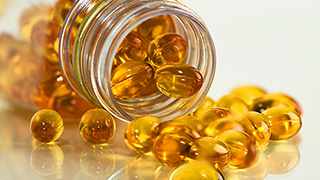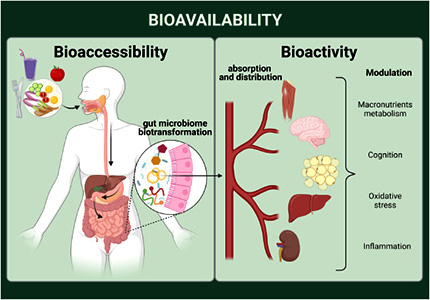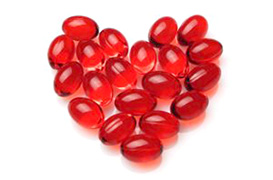Omega 3 is an Essential Poly-Unsaturated Fatty Acid, vital in maintaining the health of Brain, Heart and all Cells!
Actually, it would be wrong to say only Omega 3, there are Omega 5, 6, 7 and 9. The medical name of the Omega group is "Poly-Unsaturated fatty acids" and Omega 3 acids are members of the group. Omegas are vital foods that metabolism cannot produce and must be obtained from outside, and it is not possible to maintain good health if not enough of them are taken.
Unsaturated fatty acids, like those found in olive oil, some nuts and seeds, are extremely important for human health. Although there are many types when it comes to Omega 3 fatty acids, the most important ones can be counted as EPA (Eicosapentaenoic Acid), DHA (Docosahexaenoic Acid) and ALA (Alpha Linolenic Acid). EPA and DHA Omega 3 fatty acids are of animal origin and are mostly found in fish. ALA Omega 3 fatty acids, on the other hand, are Omega 3s of plant origin. The richest sources of EPA and DHA foods are natural salmon, tuna, mackerel, bonito, horse mackerel, anchovy and north sea fish oils. Some of the plant-derived ALA Omega 3s are converted into EPA and DHA in our metabolism after ingestion. The richest source of ALA foods are walnuts, flax seeds, Chia seeds, purslane, broccoli, spinach and olive oil.

Although animal Omega 3s seem more valuable than vegetable Omega 3s, vegetable Omega 3s contain richer vitamins and
antioxidants. The most beneficial Omega 3 nutrition is the intake of animal and vegetable Omega 3s together.
Detailed reading:
Clinical Trial Evidence and Use of Fish Oil Supplements,
A meta-analysis shows that docosahexaenoic acid from algal oil reduces serum triglycerides and increases HDL-cholesterol and LDL-cholesterol in persons without coronary heart disease,
Omega‐3 fatty acids for the primary and secondary prevention of cardiovascular disease,
Associations of Omega-3 Fatty Acid Supplement Use With Cardiovascular Disease Risks
In fact, Omega 3 is found in almost everything, not only in fish, but the myth of using Omega 3 for our health is created in the 1970s by scientists exploring why Eskimos do not have heart attacks, strokes, paraysis, infarctions, why they live long and healthy, and when they examine their daily nutrition, they found fatty acids. Finally scientists noticed that they had a fatty fish based diet, and discovered a substance found in abundance in these foods, Omega 3! All fish, not just arctic fish, have Omega 3, but cold sea fish produce more oil and Omega 3 to protect themselves against the cold, like an antifreeze.
The benefits of Omega 3s to our health are endless, but we can group the main benefits as follows:
It reduces the level of harmful fat and
cholesterol in the blood, especially Triglycerides,
It is anti-inflammatory, removes the
inflammation that causes disease in the heart, veins and joints,
It prevents the "arrhythmia" that may occur in the heart, corrects the irregularities of the heart,
Balances and lowers
blood pressure,
It dilutes the blood and provides protection against cardiovascular diseases,
Provides protection against Alzheimer's and some types of cancer,
It is useful in preventing attention deficit and hyperactivity in children.
Undoubtedly, a diet rich in Omega 3 is very healthy. It is a well-known fact that societies that consume plenty of fish, fresh vegetables, fruits and salads, such as the
Mediterranean style diet, are healthier.
The American Heart Association recommends taking capsules containing 1000 mg of Omega 3 (total DHA + EPA) per day if sufficient Omega 3-rich foods are not taken.
Detailed reading:
Omega-3 Polyunsaturated Fatty Acid (Fish Oil) Supplementation and the Prevention of Clinical Cardiovascular Disease
The Omega 3 chain can be better understood as follows: when humans and animals take plant origin Omega 3, they convert it to Omega 3 of animal origin within their metabolism. For example, if a plant rich in Omega 3, such as walnuts, purslane, flaxseed is eaten, the liver tries to convert the ALA type Omega 3 into the DHA and EPA type Omega 3 that is useful for the body. But when fish based Omega 3 is bought, or when fish or fish eggs are eaten or fish oil is drunk, appropriate Omega 3 will be taken for the body directly.
The more Omega 3 rich algae, seafood, fry fish... fish eat, the more Omega 3 they produce. Therefore, there is not much Omega 3 in fish produced on farms. Likewise, when the cow eats natural and Omega-rich grass, it converts it to animal Omega 3 in its body and passes into its meat and milk. Foods such as yogurt and cheese made from this milk become Omega 3 rich. While chickens are roaming freely in nature, they transform the Omega 3 in the worms or plant seeds they eat and add it to their meat and eggs.
Without Omega 3, cells produce inflammation, cancers occur, heart rhythm deteriorates, arteriosclerosis accelerates, joint problems begin, in short, health is threatened. That's why the body needs Omega 3. Omega 3 can be obtained from either plant sources or animal sources such as meat, milk, egg... But when these are not enough, it should be taken as Omega 3 supplements from outside.
To buy ready made Omega 3 supplements from outside some points should be carefully examined. Although there is no harm in taking excess of Omega 3 because of the big Omega 3 deficit, when buying an Omega 3 capsule, paying attention to details such as the production method, whether the fish oil in it does not contain heavy metals such as mercury and lead, whether the amount of Omega 3 acids it contains is sufficient or not, and whether only cheap fish oil is given, is important. Because if Omega 3 is not taken from quality fish, if dirty fish oil is used, excessive use can be harmful!
There is a huge Omega 3 deficit in the world today because too much Omega 6 is consumed. A new generation has emerged that has a diet rich in Omega 6 such as sunflower oil, corn oil, cottonseed oil and consumes less Omega 3. This is a great danger for today's children and youth. It's a serious need to find ways for this generation to get less Omega 6 and more Omega 3.
About 60% of our brain is fat, 20% of which is Omega 3. Omega 3 is a very important fatty acid for our health, together with Vitamin B 12 and Vitamin D, they are vitally indispensable substances.
The answer to the question of whether Omega 3 taken naturally or ready-made Omega 3 taken as a food supplement is more useful is, all of them are very useful. This issue is more about economic opportunities. For example, fish Omega is more valuable than flaxseed Omega, Krill Omega is more valuable than fish Omega (read the bio-absorption section below), and caviar Omega is more valuable than all. When buying ready-made Omega 3, the EPA and DHA values must be checked.
As for the relationship between Omega 3 and our weight, Omega 3 makes you lose weight. The caloric value of one capsule of Omega 3 is about 10 calories which is equal to one olive. Omega 3 does not cause appetite, it has nothing to do with this system, but there are very clear studies showing that it helps to lose weight as it leads to enzymatic activities that allow weight loss. But taking Omega 3 to lose weight is pointless!
Omega 3 can be taken in summer and winter, pregnant women are beneficial for both themselves and their babies. Regular use by children after the age of 2 is strongly recommended.
What should be considered in order to buy Omega 3 supplements that will really make a difference and to choose the right product?
Experts recommend the ideal daily intake of 250 mg to get the expected beneficial effect from DHA. The EPA should be proportionate to that.
It is known that Omega 3 is an extremely effective substance for not only protecting against vascular health problems such as heart attack and stroke, but also for protecting against eye health and inflammatory diseases such as rheumatism. However, many people do not even realize that the EPA and DHA found in Omega 3 are essential for brain function and mental health.
First of all, make sure that the Omega 3 you buy contains EPA and DHA. Omega 3 supplements of plant origin do not contain these valuable substances. Examine the supplement's label carefully. In order to benefit from its positive effects, the amount of EPA and DHA you need to take per day should be around 1000 milligrams in total. This amount is usually above the manufacturer's recommended dose.
7 rules for choosing the right Omega 3 supplement:
When choosing an Omega 3 supplement, make sure that the EPA/DHA ratio is 3/2 and multiples. The higher this ratio, the better the quality of the Omega 3 supplement.
Omega 3 supplements should be in Triglyceride form. Omega 3 products in Ethyl Ester form are not sufficient to provide the expected benefit.
When Omega 3 fatty acids come into contact with air, they become oxidized and their structures deteriorate. Therefore, make sure that the capsules in which Omega 3 oils are placed are guaranteed airtight.
The capsules, which are soft when you take them between your two fingers and squeeze them, leak air. Such capsules cause oxidation of Omega 3 fatty acids.
Some manufacturers put a nitrogen gas (Nitrogen) bubble inside the capsule to prevent Omega 3 capsules from deteriorating by oxidation. There is a high-tech production concept behind the capsules in which Omega 3 is used together with nitrogen gas bubble, and thanks to this method, valuable fatty acids preserve their effectiveness without spoiling. Nitrogen gas is harmless to human health (most of the inhaled air consists of nitrogen gas) and products produced with this system are the right Omega 3 supplements. If found, Omega 3 should be preferred as such.
Care should be taken to use Omega 3 supplements guaranteed by the manufacturer that they do not contain GMOs and heavy metals, and products that do not give this guarantee should not be trusted.
Not all fish oil in the bottle is Omega 3. For example, the box label may say 1200 milligrams of fish oil, this is the total amount of fish oil in the bottle, not the beneficial active ingredients in it. That is, the sum of EPA and DHA in 1200 milligrams of fish oil can be 100 milligrams and does not provide any benefit.
Because it is in a phospholipid form, the bio-availability of krill oil is far superior to fish oils and vegetable Omega 3 oils (ALA). In fact, based on this superiority claim, krill oils are sold in the market much more expensive than fish oils.
Bio-availability indicates how much of that product can be absorbed by the body or how much of its content can be utilized.
Omega 3 mainly consists of DHA and EPA fatty acids. About 60% of the brain is fat, and about 20% of it is DHA. The body cannot produce DHA or EPA itself. It must be taken from outside with food or as supplements.
DHA is essential for brain functions such as memory, concentration, focus and learning. It's deficiency in the brain can cause distraction, hyperactivity, memory problems, concentration and focusing problems, and reading disorders in young children. It is noticed that the rate of DHA in the brains of Alzheimer's patients is very low.
On the other hand, EPA is very important for cardiovascular health. Comparisons to be made on the amount of DHA contained in the sources of Omega 3 oils are also valid for the amount of EPA.
Fish oils are of two types. One of them is triglyceride form fish oil, which is natural fish oil. Its bioavailability is in the range of 70-80%. This means that when a triglyceride fish oil is taken, the body can absorb 70-80% of the DHA in it.
The other fish oil is Ethyl-Ester fish oil, which is a semi-finished fish oil and its bioavailability is very low. The bioavailability of ethyl-ester fish oil is in the range of 20-30%. So, when a fish oil is taken in ethyl-ester form, the body can absorb 20-30% of the DHA in it.
Vegetable Omega 3 sources such as walnuts and flax seeds are in the form of ALA and do not contain ready-made DHA and EPA forms that the body can use. The liver tries to convert herbal Omega 3 sources to DHA and EPA, but is not very successful in this regard. While the liver can convert 5% of ALA to EPA, it can only convert 1% to DHA. In some metabolisms, success may even fall below these values. In other words, plant Omega 3 sources are not very suitable sources for DHA and EPA that the body needs. In this sense, it can be said that the bioavailability of herbal Omega 3 sources in terms of DHA is 1%.
However, krill oil, which has been offered as a miracle in recent years, has been tried to be shown as much superior to fish oils, especially by saying that its bio usefulness is 90-100%. In particular, krill producers use this argument to make such news appear in the media.
Products as Bioavailability:
Krill Oil (Krill oil) 90-100%
Fish Oil in Triglyceride Form 70-80%
Fish Oil in Ethyl-Ester Form 20-30%
Herbal Omega 3 (ALA) 0.5–1%
Indeed, the bioavailability of krill oil is in the range of 90-100%, since it is in the phospholipid form. So, in terms of bioavailability, krill oil is better than triglyceride fish oil. However, an important truth is hidden here. Compared to fish oils of the same volume, the amount of DHA and EPA in krill oils is very low. The level of DHA in daily use is 100 mg or less. So the amount you can absorb 100% is just 100mg at best.
There are trglyceride fish oils on the market that contain high levels of DHA, such as 600 mg, 800 mg, 1250 mg for daily use. There are even ethyl-ester fish oils containing around 600 mg of DHA. This fact changes the situation and shows that the information is misleading.
When buying products, the label should be read and the amount of DHA and EPA in the product should be checked. This information must be written on the product label. If it doesn't say the amount of DHA and EPA on the label, it means that it does not contain DHA and EPA.
For example, when a triglyceride fish oil with 1250 mg of DHA in daily use is taken, the body will only be able to absorb 70-80% of it. Calculating the upper limit, the body will absorb 1000 mg of DHA from this product (1250 mg x 0.80).
For example, when an ethyl-ester fish oil with 400 mg of DHA in daily use is taken, the body will only be able to absorb 20-30% of it. Again, calculating the upper limit, the body will absorb 120 mg of DHA from this product (400 mg x 0.30).
For example, when a krill oil with 100 mg of DHA in daily use is taken, the body will be able to absorb 90-100% of it. Choosing a krill oil with 250 mg of DHA in it is not possible, because the amount of DHA in krill oils is very low, in general there is maximum 100 mg of DHA in krill oils. If the label of the product is checked, this fact will be noticed. In this example, calculating the upper limit again, the body will only be able to absorb 100 mg of DHA (100 mg x 100%).
Except for high DHA triglyceride fish oils, even an ethyl ester fish oil may be better at absorbing DHA than krill oil. In summary, the fact that the Phospholipid Omega 3 oils (DHA and EPA) in Krill oil can be 100% absorbed by the body becomes insignificant because Krill oils contain low doses of DHA and EPA.
But it is unreasonable to conclude that all fish oils are superior to krill oil. For example, the amount of DHA to be absorbed from an ethyl-ester fish oil containing 200 mg of DHA (200 mg x 0.30) is 60 mg. For example, a krill oil containing 100 mg of DHA (as 100% is absorbable) is better than an ethyl-ester fish oil containing 200 mg of DHA.
Those who care about their brain should choose products with high DHA, those who care about cardiovascular health should prefer products with high EPA. Products are valuable according to the ratios of DHA and EPA they contain.
Due to the nature balance disturbed by humankind, it has become obligatory to take Omega 3 as a food supplement today, which used to be found in nature sufficiently in the past! Without Omega 3, Cells produce Inflammations, Cancers, Heart Diseases, Arteriosclerosis... In summary, having and maintaining good health becomes more difficult, and health becomes vulnerable to various threats!
Back to Home














